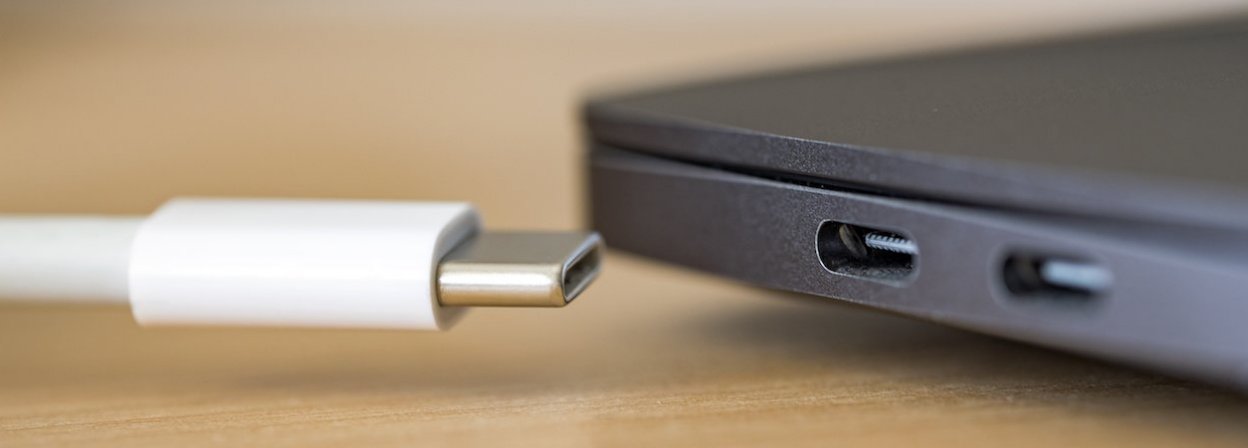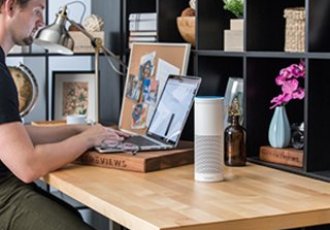BestReviews is reader-supported and may earn an affiliate commission. Details

Apple’s official USB-C cable is a must-have for iPhone, iPad, and Mac owners because of its versatility and premium performance.
Apple’s official USB-C cable is a must-have for iPhone, iPad, and Mac owners because of its versatility and premium performance.
Optimized for charging, data transfer, and video output with Apple devices. Connect up to 6 devices via daisy-chaining. Lightning-fast data transfer speeds. Reliable.
A fairly pricey USB-C cable.

Samsung’s USB-C cables are dependable, efficient, and especially inexpensive to replace if misplaced.
Samsung’s USB-C cables are dependable, efficient, and especially inexpensive to replace if misplaced.
Affordable. Fast data-transfer speeds. Reversible USB-C connectors. Charges quickly. Available in white and black.
Only available in a single size.

Between its rugged design, reliability, and low price, it is easy to see why Anker’s Powerline II USB-C is such a hit with customers.
Between its rugged design, reliability, and low price, it is easy to see why Anker’s Powerline II USB-C is such a hit with customers.
Affordable. Long 6-foot USB-C cable. Optimized to bend without breaking. Especially fast charging and data-transfer speeds.
Not much options.

The best option to connect any compatible USB-C device. Can be used for charging and syncing files like photos and music.
The best option to connect any compatible USB-C device. Can be used for charging and syncing files like photos and music.
A fast data transfer rate of 10Gbps will make file transfers quick and easy. Extra cord shielding to keep interference from outside sources down to a minimum.
The 3-foot cord length might be too short for some computer setups.

A multi-device-compatible cord that works perfectly with desktops, laptops, smartphones, tablets, and individual wall chargers.
A multi-device-compatible cord that works perfectly with desktops, laptops, smartphones, tablets, and individual wall chargers.
The fast USB 3.0 cord supports outdated USB versions on older devices. Will work with popular Android devices like the Samsung Galaxy S8.
Uses cheaper materials that may not survive rough use over time.

We recommend these products based on an intensive research process that's designed to cut through the noise and find the top products in this space. Guided by experts, we spend hours looking into the factors that matter, to bring you these selections.

USB-C cables are used to recharge electronic devices or transfer files, such as pictures, between two devices. Commonly used with many laptops, desktops, and smart devices, this type of cable is faster and more convenient than other USB cables.
The key factor when looking for a USB-C cable is device compatibility. The unique shape of the plug is incompatible with other USB ports. If your device doesn’t have a USB-C port, you’ll need an adapter to use a USB-C cable. It’s also important to have the right plugs on both ends of the cable since some options come with other plugs, such as USB-A.

USB-C cables are extremely versatile, on paper at least, since they can power devices and transfer data at the same time. In reality, some cables are faster and more reliable than others.
When you’re looking at different USB-C cable options, it helps to know how you will use the cable. Will you use it to charge a tablet or smartphone? Do you need a cable to transfer files between devices? Will you use the cable with multiple devices? Knowing your intended use will help you narrow your options. If a cable doesn’t offer the performance or capabilities you need, it’s best to look elsewhere.
The USB-C specification is considered an “open standard,” meaning companies can change the spec for their own needs, so there is some variation in design when it comes to these cables. As a result, some aren’t compatible with some devices even if the cable fits into a device’s USB port.
Device compatibility means a USB-C cable will work with a device without damaging it. If the cable isn’t compatible, there’s a risk of damaging the battery or even starting a fire if there’s enough power. This risk increases with third-party cables that may not be as “universal” as the packaging suggests.
USB-C Power Delivery: Check to see if your device is compliant with the USB-C Power Delivery (PD) standard. You can usually find this information in the owner's manual or online. If it complies with the standard, you can use a cable that also meets that standard. If not, it’s best to use a cable from the device’s manufacturer or one designed specifically for your device.
USB cables and devices can get confusing with terms like “USB 3.0,” “micro USB,” and “USB-A.” In addition to the plug type (marked by letters like A, B, and C), USB cables all have a specific protocol that affects device compatibility and data transfer rates. Most devices are compatible with USB 3.0, although some older laptops and desktops may be limited to the slower 2.0.
You’ll find USB-C cables that use the USB 2.0, 3.0, or 3.1 (Gen 1 or 2) protocol. In most cases, it’s best to find a cable with the same protocol as your device. If your laptop is limited to USB 2.0, you’ll need a USB-C cable with the 2.0 protocol. A mismatched cable/device pairing can limit speeds or prevent the cable from working altogether.
Two of the most common uses for any USB cable are transferring data between two devices and charging batteries. For example, you can use a USB-C cable to transfer photo files from your smartphone directly to a laptop instead of through email or the cloud, all while charging the battery at the same time.
Transfer speed: The cable’s protocol sets the maximum possible transfer speed. USB 3.0 and 3.1 Gen 1 cables are capable of transfer speeds up to 5 gigabytes per second (Gbps). USB 3.1 Gen 2 doubles that rating to 10 Gbps. Since USB-C is an open standard, however, these aren’t the only options in terms of speed. With Apple’s Thunderbolt 3 protocol, for example, you can achieve transfer speeds of 40 Gbps.
Charging speed: The device’s battery and the cable’s design determine the charging speed. Some manufacturers have designed cables with “quick-charging” or “turbo-charging” capabilities. Others just rely on the power delivery rating of the cable’s USB protocol.
For the best performance, choose a USB-C cable with 3.1 Gen 2 unless you need a slower protocol for your device.
Things get tricky when it comes to USB cable plug types. The different shapes and sizes mean you need to find a cable with the right plugs on both ends for the devices you want to connect. USB Type-C plugs are designed to be more user-friendly than other versions: They are small, rugged, and reversible, so you don’t have to put one into the port a certain way.
USB-C cables with two Type-C plugs are not as common as “captive” cables – USB-C cables with one Type-C plug and a different plug type on the other end. You’ll find a variety of cables meant for different devices with smaller or larger plugs. Most cables have the large USB Type-A plug that is common for laptops, desktops, and chargers. Older, smaller devices may require a cable with a mini or micro plug.
The devices and your intended use will largely influence the type of plug you need. In most cases, this is as simple as finding a cable that fits into the USB port of the device. When in doubt, refer to the specifications for your device to see what type of USB plug it requires. Pay attention to the USB-C cable’s specs or packaging to make sure it has the correct plug ends as well.
The quality and length of cables differ from option to option.
Quality: In most cases, more expensive cables use higher-quality materials with a better overall design and more durable construction. Inexpensive options can be decent if your budget is tight, but you should expect these cables to be more susceptible to damage or normal wear and tear.
Length: Most cables measure less than a foot if they’re for smaller devices or laptops. Longer cables, typically in the three- to six-foot range, are common for desktop computers or specialized equipment that needs the extra length.
Since compatibility can be an issue with devices that have older USB ports, adapters have become common for ends like USB Type-A and HDMI plugs. If you want a USB-C cable with two Type-C plugs, an adapter is a good alternative to a captive cable with only one Type-C end.
USB-C to USB-A: These adapters work well with older devices with a standard USB port limited to the 2.0 protocol. Display adapters for HDMI, DisplayPort, and older VGA monitors or televisions are good for streaming video from a small device onto a larger screen.

You can find USB-C cables at many different price points, but since most cables are simple accessories for computers and other devices, you can expect quality options to be affordable.
On the low end, most USB-C cables with two Type-C plugs range from $5 to $15 for a single cable. A good USB-C to USB-A cable is also easy to find around this price. If you only need a basic cable to transfer files or power a device, this range is good enough.
If you spend $15 to $25, you’ll find higher-quality options along with captive cables with different plug ends like HDMI and DisplayPort adapters. Economical multi-packs of two to four cables also start in this range. At this price, you can expect data and charging speeds to be close to the upper limit of the cable’s USB protocol.
At $25 and more, device-specific and specialty cables are the most common. For example, many Thunderbolt and Lightning to USB-C cables sit right around the $25 mark. Large USB-C hubs and adapters also start at this price and go up to around $75.
Look for products with the USB-IF certification. You’ll find a logo with the power rating of the charger somewhere on the packaging or the product itself. This mark of compliance means the charger has been designed and tested with other USB-C devices.
Put together an adapter kit to maximize the use and versatility of a simple USB-C cable with two Type-C ends. A USB-A adapter goes a long way for most larger devices. For video, add an HDMI or VGA adapter (for older projectors and monitors) into the mix as well.
Order replacement cables from the device manufacturer. If you need to replace a USB-C cable that came with a device like a tablet or smartphone, order the replacement from the manufacturer to avoid any worry about compatibility issues.

A. Not unless your device has a USB-C port. Older devices with more standard USB-A ports, for example, are perfectly fine with older USB cables. More importantly, these devices probably won’t be able to take advantage of the higher transfer and charging speeds if they’re limited to older USB protocols like 2.0.
A. That depends on your device, the type of charger, and the underlying USB protocol. Older devices with USB 2.0 or 3.0 won’t see any change in charging speed. Newer devices that can take advantage of the latest power standard, USB Power Delivery, can use a USB-C cable for faster speeds. If you have a device with its own quick-charging or turbo-charging capabilities, you will likely need to use the manufacturer’s cable for the best results.
A. You can use a USB-C cable with devices that lack a USB-C port. This is a great way to connect newer smart devices like a tablet to older laptops or desktops to transfer files. You will need an adapter or captive cable with the right USB plug to connect the USB-C cable into the older device.
Get emails you’ll love.
Learn about the products you’re wondering if you should buy and get advice on using your latest purchases.
